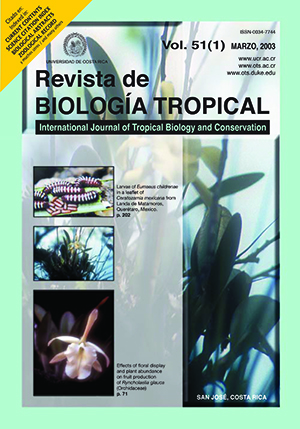Abstract
seven reef formations were studied in South Caicos, Turks & Caicos, to determine the species richness, patterns of diversity and patterns of distribution of crustaceans and echinoderms, and to evaluate the relationship between these parameters and the degree of sedimentation of the different sites. The reefs showed a gradient from a high sedimentation level, almost totally covered by algae, to places with no sediment particles deposited over the corals. Sites were classified as with high, low or null sedimentation, and species richness, abundance, diversity, spatial distribution of species and similarity among sites were estimated. No unique pattern was found: for crustaceans as well as for echinoderms, the site with the highest diversity value and high equitability, presumably associated to the environmental heterogeneity of this reef formation, showed null sedimentation and an uniform and random pattern of distribution, crustaceans and echinoderms respectively. The two sites with the lowest diversity for both animal groups, although with different sedimentation levels, showed the lowest equitability value and were the only sites with an aggregated pattern of distribution. The next sites in diversity for crustaceans were those with high sedimentation, probably because most species present inhabit empty conchs, in the sediment, or among seagrasses. For the echinoderms, on the contrary, the intermediate sites in diversity had low sedimentation; the habitat requirements for these species (inside sponges, over the corals or among rocks) may have determined this result. The sites with lowest diversity had high sedimentation levels. In these, crustaceans showed the lowest equitability values and an aggregated spatial distribution, while the community of echinoderms was dominated by one single species. Although only general descriptions can be elucidated with the present results, knowledge about the basic population characteristics and natural history of these reef communities, combined with that of the perturbations related to human activities, provides useful base information for appropriate planning for the restoration and conservation of this ecosystem##plugins.facebook.comentarios##

This work is licensed under a Creative Commons Attribution 4.0 International License.
Copyright (c) 2003 Revista de Biología Tropical
Downloads
Download data is not yet available.


